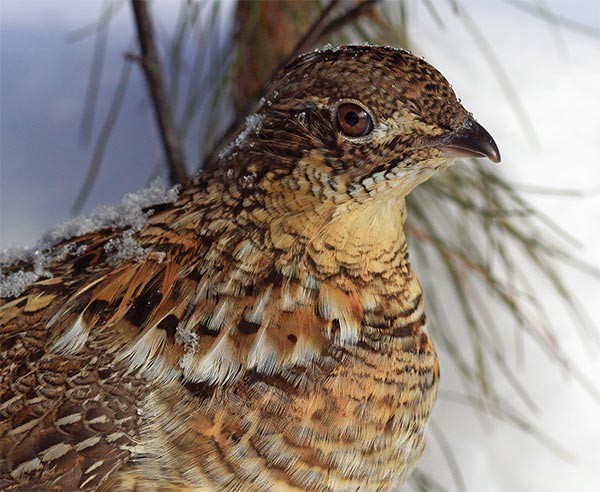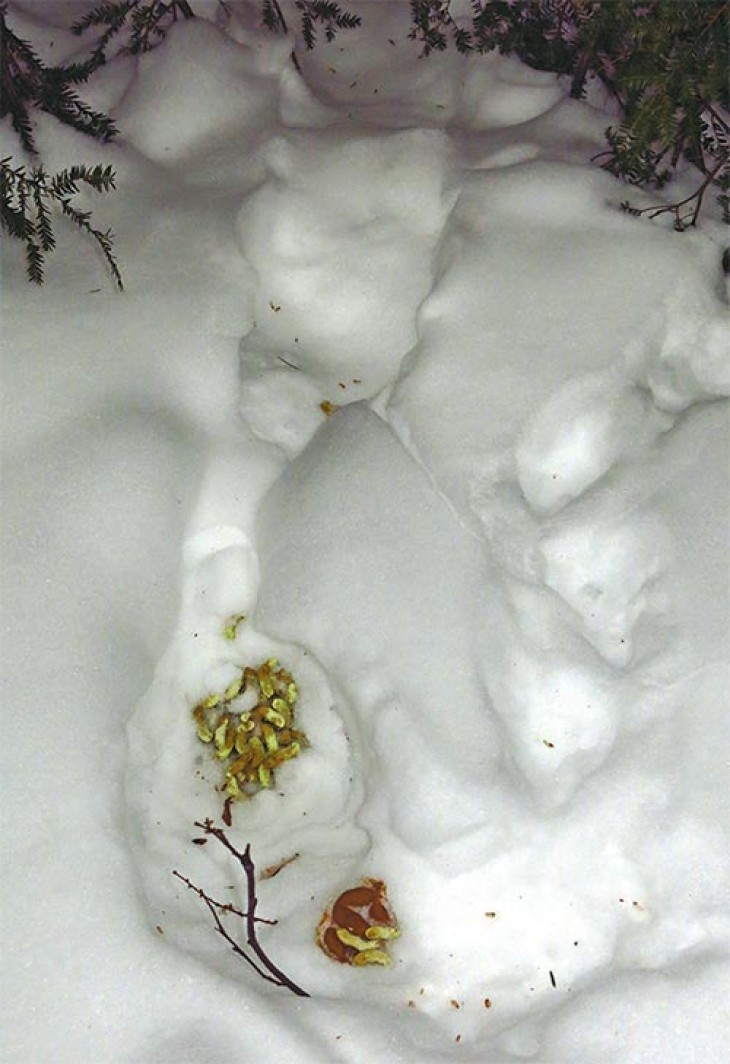I still remember my childhood excitement when my grandfather explained to me what those holes were in the deep snow. “Snow roosts,” he explained, and they’re made when a ruffed grouse folds its wings and deliberately plunges into the snow. “That’s cool,” I said. “Yes,” he gently added, “but the grouse actually keeps warm inside that roost.” Years later, my ecology students and I measured just how warm that could be. Within a subnivean chamber 18 inches under a fluffy snowpack, the temperature was 29 degrees instead of the frigid minus 22 above the snow.
In winter, ruffed grouse “browse” on the buds, twig tips, and catkins of paper birch, eastern hophornbeam, American hornbeam, hazelnut, serviceberry, and cherry species. They especially like quaking aspen and other poplars. Where these species are abundant, a grouse can quickly access and consume an entire day’s food in less than 30 minutes. They retire to the warmth and safety of snow roosts for the balance of the day. Safe from predators, digestion and elimination takes place throughout the day and night.
Trackers can easily confirm where a grouse has spent some time undercover in its roost by the piles of multiple droppings therein. We can also see evidence of other activities, especially if a thaw melts the “roof” off the roost chamber. A horizontal trail may still be seen from point of entry to a second hole, where wingbeat impressions may reveal where the grouse emerged and flew off.
Fall’s photoperiod triggers adaptations that enable grouse to cope with winter’s deep cold and snow. Feathers grow and completely encircle the legs – a vital adaption for a bird that spends much of its time walking. Grouse toes change and become fringed with comb-like pectinations which are modified hairs that nearly double the surface area of each toe. In addition to providing better traction on ice-covered snow and branches, these pectinations are the gallinaceous grouse’s version of bear-paw snowshoes: they significantly increase the load-bearing capacity of each foot, enabling the grouse to keep on top of it all.




